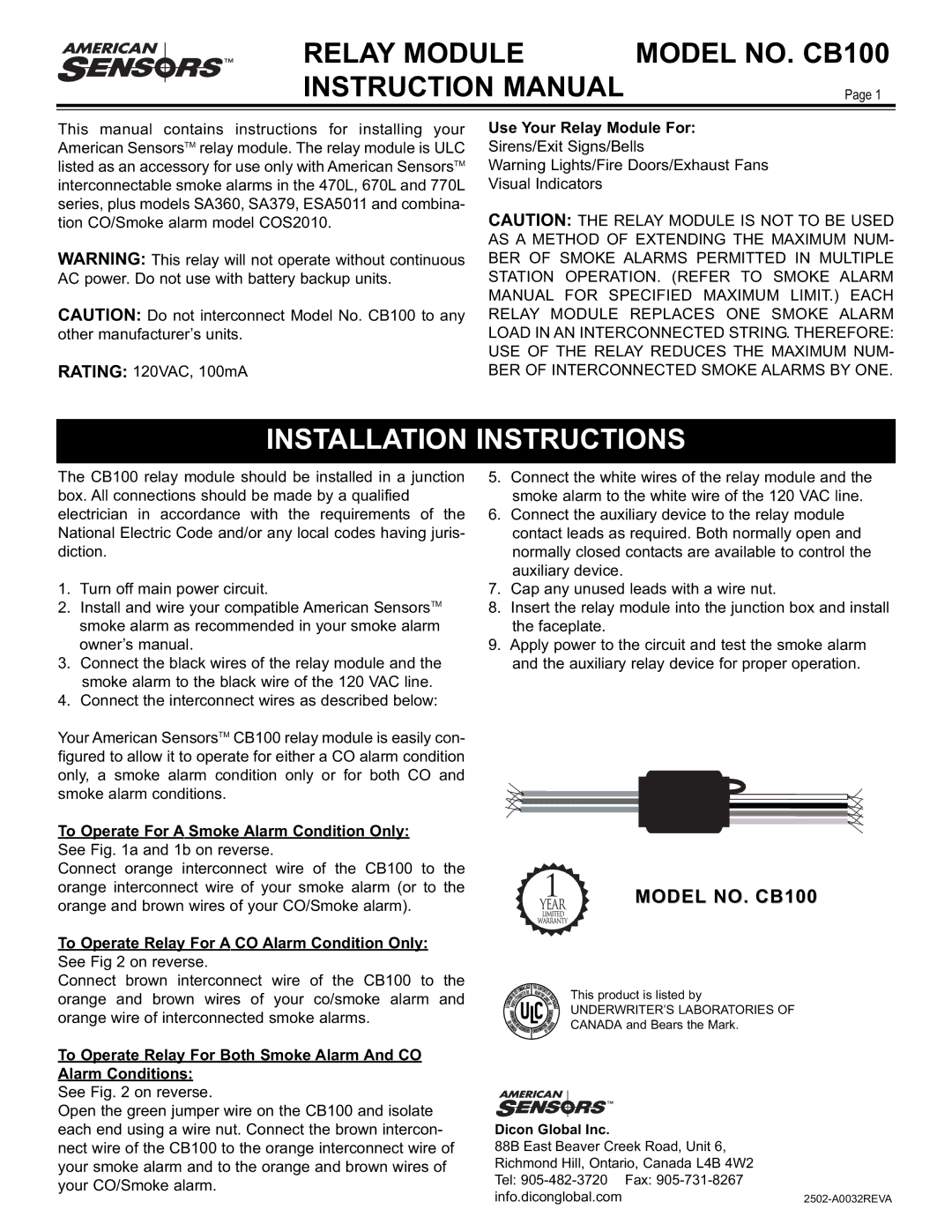CB100 specifications
The American Sensor CB100 is a cutting-edge device designed for a variety of industrial applications, particularly in the areas of monitoring and control systems. This advanced sensor combines robust technology with user-friendly features, making it a valuable tool for professionals in the field.One of the standout features of the CB100 is its high accuracy. Engineered with state-of-the-art sensing technology, it provides precise measurements, ensuring reliable data collection. The sensor is capable of monitoring various environmental parameters, including temperature, humidity, pressure, and more, making it versatile for different applications.
The CB100 is equipped with an advanced digital interface, allowing for seamless integration with existing systems. This feature ensures compatible connections with various controllers and software, enhancing its usability in industrial settings. The sensor supports multiple communication protocols, including RS-485, Modbus, and Ethernet, making it highly adaptable to different networking environments.
A key characteristic of the CB100 is its rugged design, built to endure harsh conditions. The device is housed in a durable enclosure that protects it from dust, moisture, and extreme temperatures, making it ideal for outdoor or industrial environments. Additionally, it features a wide operating range, allowing it to function effectively in various atmospheric conditions.
The sensor is also designed for low power consumption, enabling longer operational life even in remote locations. Users can expect reduced maintenance costs and increased efficiency due to its energy-saving capabilities.
Furthermore, the CB100 includes advanced calibration features, allowing users to adjust the sensor settings easily. This capability ensures that the device remains accurate over time, adapting to changes in the monitoring environment without requiring professional recalibration.
With its comprehensive features, including high precision, robust communication options, and durable construction, the American Sensor CB100 sets a new standard in industrial monitoring technology. Whether for environmental monitoring, manufacturing processes, or facility management, the CB100 is a reliable choice for professionals seeking efficiency and accuracy in their operations.

